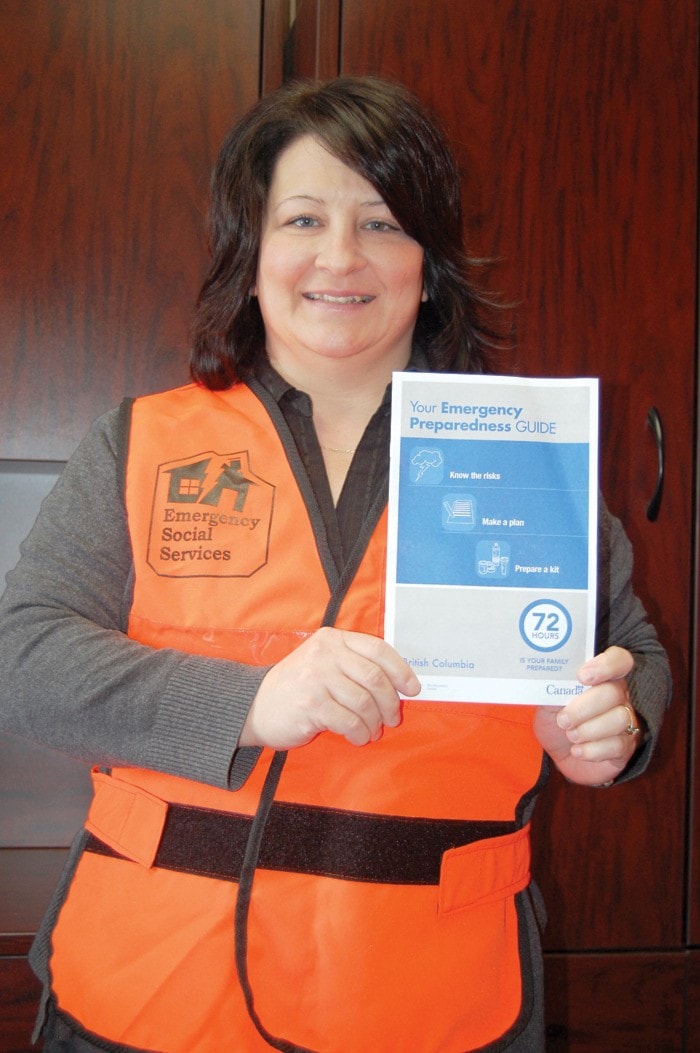DESPITE ALL the damage the flood of 2007 inflicted on many residents, something helpful came out of it.
The Regional District of Kitimat-Stikine set up Emergency Social Services (ESS) to help people affected by disasters and emergencies for 72 hours to give disaster victims the chance to get themselves sorted out, says ESS director Stacey Kennedy.
“We take care of their immediate needs: food, clothing and shelter, so they don’t have to worry about that and can focus on ‘what am I going to do,’” says Kennedy.
The organization consists of 10 active volunteers and others who are called as needed for large scale events for a total of about 30 people, she says.
ESS gets its assistance from the province – formerly from the Provincial Emergency Program that is now named Emergency Management BC – for clothing, food and shelter and provides referral vouchers to disaster victims, says Kennedy.
“We get activated generally upon a call from one of our emergency program coordinators so either [Terrace fire chief] Peter Weeber or [Thornhill fire chief] Wes Patterson,” she says.
If a disaster or emergency occurs, it’s important to be prepared for 72 hours minimum and to put together a plan and a kit for home and for vehicles because emergencies don’t always happen while we’re all together and while we’re home, she says.
Some items to have in your kit are food, water, batteries, radio, prescriptions, cash, a copy of your bank account numbers, and insurance account numbers.
And that means a three day supply of food and water for every person in the family, including pets.
“By people preparing for themselves, it allows us to focus resources on individuals at risk, low income, special needs or seniors in the community,” says Kennedy.
“Establish a contact person outside who the family can contact to find out where each other is.” Having a generator is a good idea too as a power outage can be an inconvenience when it happens for several hours, nevermind for several days.
“What if is lasted three days or a week? Are you prepared?” Kennedy asks.
“Be realistic about your basic needs. You’re not looking to have to watch TV and you know, think about if you have an elderly neighbour, perhaps maybe you could incorporate them into your plan,” she says.
If the power went out during a cold spell, ESS would set up warming shelters, such as at the Thornhill Community Centre, where people could drop in to stay warm.
ESS members meet once a month to train and justice institute trainers come in a couple times a year to do emergency management courses.
Kennedy says ESS is thankful for the assistance it receives from those who provide supplies, such as the Bear Country Inn, Safeway and Walmart.
“It’s really a community effort,” she says, adding that people are usually put up in a hotel rather than at someone’s home.
Another thing to think of is pets, in case they need to be boarded somewhere.
“I have horses so I need to make sure I have somewhere to bring them,” she says. “They can’t fit into the Bear Country Inn.”
People interested in volunteering with ESS are encouraged to call Kennedy.
For more guidelines on how to make a family emergency plan and prepare a kit, see http://www.getprepared.gc.ca.
